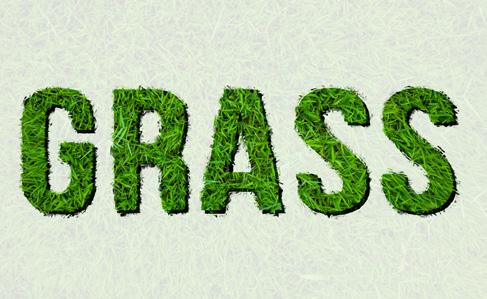
4 minute read
From Golf Operations
THE SCIENCE OF
ON THE GOLF COURSE
Jeff Hochman
Assistant General Manager
When Sun City Grand was built and was actively selling homes, the key focus for the golf courses was to have the best winter conditions and hold onto the ryegrass as long as possible into the warmer summer months. This plan worked well to help sell the homes quickly and to have the ryegrass “hang on” longer to have better playing conditions longer into the summer months. This plan proved to be negative in the long run for the health of the base grass; Bermuda grass. Every year this practice was done, it was depriving the Bermuda grass of the opportunity to have 100 days of noncompetitive growth which started to weaken the base. In 2008, it was the year that the Bermuda grass “gave up” and the conditions in the fairways were poor. It was at that time the Sun City Grand Board of Directors accepted the plan that was presented to them by staff to put as much emphasis on summer golf as is put on winter golf. The plan included the following which include some modifications that were changed over time to improve the process. n Remove the winter ryegrass with a selective herbicide. This would remove all of the competition for the Bermuda grass and show all of the weak areas on the golf courses. n Close the courses for 3 weeks each and treat them just like a fall overseeding.

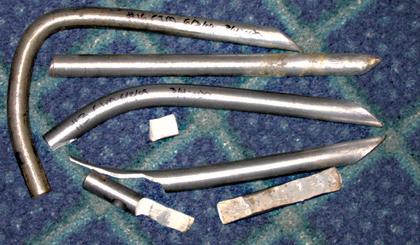
3/4 inch solid tines that were bent or split during the beginning years of the summer transition program.
n Staff would aerify the golf course pulling cores. n An outside contractor would then deep tine the fairways with ¾ inch solid tines. The ground was so hard the first couple of years that the tines would bend or snap. n Staff spreads 35 tons of sand per acre on the fairways to build them up to create a better growing condition for
Bermuda grass. n Put down sod in areas that have no sign of Bermuda grass growth in a 100 square foot area. This was about an acre or more of sod per golf course when the program first started and there are almost no areas today that fit the original criteria for sodding. n Remain on cart paths only for 3 weeks to allow the grass to fill in. (Treat the summer transition similar to the fall transition.) n Double aerify and heavily top-dress the greens to create less interruptions during the summer golf when this practice needs to be done. n In the fall, reduce the amount of seed from 700 pounds per acre in the fairways to 550 and the roughs would go from 450 to 350. This would create some off color but would be less stressful to the Bermuda grass. The plan has been working as planned

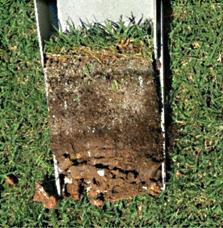
A healthy mixture of sand and organic matter now resides above the native soil in the fairways, resulting in better playability and a healthier rootzone.
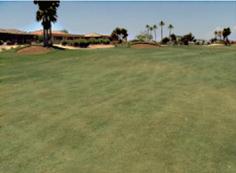

August 2008 July 2009 July 2010
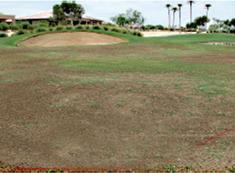

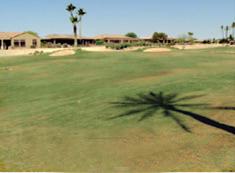
July 2011 July 2012 Late June 2013
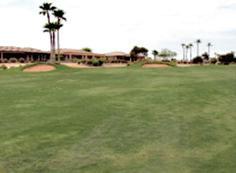
As conditions improve, it is easy to forget the struggles faced five years ago. Extensive sodding was needed in 2008 on No. 8 Cimarron to provide bermuda grass coverage prior to overseeding. Chronological photographs show that conditions improved in the first few years and have leveled off. The next step will be to improve irrigation uniformity.
and the summer transition continues to improve each year. Staff continues to work closely with the United States Golf Association (USGA) on updated practices to continue to improve. The USGA comes out every year to evaluate the courses and they are very happy with the success of the program. All golf courses in the Southwest go through transition 2 times a year, the Fall and the Summer. Each course goes through the summer one at different times which can affect their playability/ look of when you are playing it. Many things go into how well a course transitions. n Proper irrigation (head spacing, nozzles, low heads, pressure, water quality) n Course traffic/play in the winter months n Types of Bermuda grass n Overseeding practices n Weather The staff appreciates your patience and support as this necessary work is performed for the long term success of the golf program.

COMMUNITY LIFE SAFETY EDUCATION DIVISION
14250 W. Statler Plaza , Ste. 101, Surprise, AZ 85374 P: 623.222.5400 F: 623.222.5002

CITY OF SURPRISE
www.surpriseaz.gov, 623.222.1000 Non-emergency police, 623.222.4000 Non-emergency Fire, 623.222.5000 Mayor’s and Council’s Office, 623.222.1300










